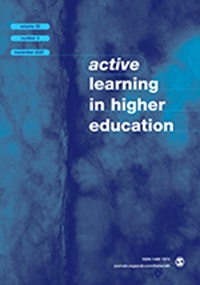从教师信息传递到学生反馈素养:激活反馈过程中的学习者角色
IF 3.2
1区 教育学
Q1 EDUCATION & EDUCATIONAL RESEARCH
引用次数: 70
摘要
为了使反馈过程有效,他们需要让学生积极参与生成、处理和响应反馈信息。教师传递方法不太可能提供良好的时间和资源投资,因为它们不能充分利用学生代理。在这篇概念性文章中,有人认为,在有效利用各种形式的反馈输入时,学生需要处于反馈过程的中心。教育者的作用在于设计学习环境,为学生提供充足的机会来做出评估判断并对反馈信息采取行动。分析是通过学生为自己产生的内部反馈的相互关联的概念来构建的;以及学生的反馈素养,即有效参与反馈过程的能力。提出了用书面回应进行学生同行评审,并使用范例作为教师反馈的替代品,作为激励内部反馈产生和提高学生反馈素养的教学选择。对这两种学习活动进行了分析,以说明通过比较学生自己的生产和他人的生产,使学生能够产生内部反馈的研究方法。还讨论了数字可供性和可能性,特别强调视频同行反馈和注释的在线示例。从教育者和学生角色以及相关的数字可供性的角度总结了实践的主要启示。讨论并解决了执行方面的挑战。一个重要的考虑因素是制定有利于工作量的策略,以避免目前许多非生产性评分做法的浪费。分析表明,教师和学生的共同反馈素养有可能促进原则性研究,为反馈过程提供明智的方法。本文章由计算机程序翻译,如有差异,请以英文原文为准。
From teacher transmission of information to student feedback literacy: Activating the learner role in feedback processes
For feedback processes to be effective, they need to involve students actively in generating, processing and responding to feedback information. Teacher transmission approaches are unlikely to provide a good investment of time and resources because they fail to draw sufficiently on student agency. In this conceptual article, it is argued that students need to be at the centre of feedback processes in making productive use of feedback inputs of various forms. The educator role lies in designing learning environments which provide plentiful opportunities for students to make evaluative judgments and take action in response to feedback information. The analysis is framed through the interlocking concepts of internal feedback which students generate for themselves; and students’ feedback literacy, the capacities to involve themselves productively in feedback processes. Student peer review with a written response, and using exemplars as proxies for teacher feedback are proposed as pedagogic options which stimulate the production of internal feedback and promote student feedback literacy. These two learning activities are analyzed to illustrate research-informed ways of enabling students to generate internal feedback by making comparisons between their own production and that of others. Digital affordances and possibilities are also discussed with particular emphasis on video peer feedback and annotated online exemplars. The main implications for practice are summarized in relation to educator and student roles, and related digital affordances. Challenges for implementation are discussed and addressed. An important consideration is to develop workload-friendly strategies which avoid the wastefulness of much current unproductive marking practices. The analysis suggests that shared teacher and student feedback literacy carries potential to facilitate principled research-informed ways forward for feedback processes.
求助全文
通过发布文献求助,成功后即可免费获取论文全文。
去求助
来源期刊

Active Learning in Higher Education
EDUCATION & EDUCATIONAL RESEARCH-
CiteScore
13.20
自引率
12.00%
发文量
31
期刊介绍:
Active Learning in Higher Education is an international, refereed publication for all those who teach and support learning in higher education (HE) and those who undertake or use research into effective learning, teaching and assessment in universities and colleges. The journal is devoted to publishing accounts of research covering all aspects of learning and teaching concerning adults in higher education. Non-discipline specific and non-context/country specific in nature, it comprises accounts of research across all areas of the curriculum; accounts which are relevant to faculty and others involved in learning and teaching in all disciplines, in all countries.
 求助内容:
求助内容: 应助结果提醒方式:
应助结果提醒方式:


